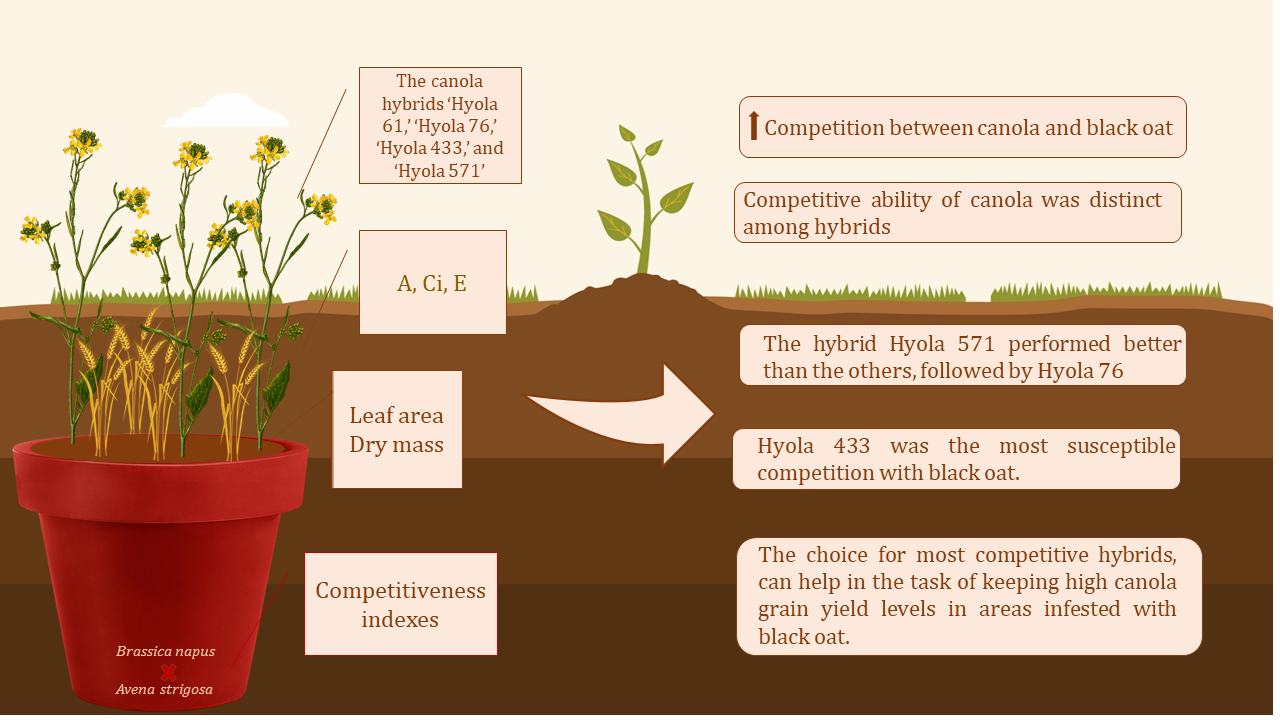Competitive ability of canola (Brassica napus var. oleifera) hybrids with black oat (Avena strigosa) in a subtropical environment
DOI:
https://doi.org/10.48162/rev.39.046Keywords:
Brassica napus var. oleifera, Avena strigosa, competitive interaction, replacement series method, aggressivenessAbstract
The objective of this study was to assess the competitive ability of canola (Brassica
napus var. oleifera) hybrids in competition with black oat (Avena strigosa) in a subtropical environment. The experiments were conducted in a greenhouse where canola hybrids ‘Hyola 61,’ ‘Hyola 76,’ ‘Hyola 433,’ and ‘Hyola 571’ were tested individually for their competitive performance with black oat. The plant proportion between black oat and the canola hybrid was changed (100%:0%; 75%:25%; 50%:50%; 25%:75%; and 0%:100%) while keeping the total population of plants constant (20 plants plot‑1). Photosynthesis rate (μmol m-2 s-1), internal CO2 concentration (μmol mol-1), and transpiration rate (mol H2O m-2 s-1) were assessed using an infrared gas analyzer 55 days after emergence. Leaf area (m2 m-2) and dry matter (g m-2) were also assessed on the same day. The data set was analyzed by the replacement series method for competition studies. There was evidence of intense competition between canola and black oat, independent of plant proportion. The competitive ability of canola was distinct among hybrids; Hyola 571 performed better than the others in the competition against black oat. Choosing the most competitive hybrid, such as Hyola 571, helps maintain high canola grain yield levels in areas infested with black oat.
Highlights:
- There is difference in competition among canola hybrids against black oat; Hyola 571 performed better in the competition;
- Preference should be given for most competitive canola genotypes against weeds, and weed control should be carried out early in the critical period of interference;
- Aggressiveness is the most preponderant parameter in determining canola genotypes with superior ability in competition against weeds.

Downloads
Published
Issue
Section
License
Copyright (c) 2018 Revista de la Facultad de Ciencias Agrarias UNCuyo

This work is licensed under a Creative Commons Attribution-NonCommercial-ShareAlike 3.0 Unported License.
Aquellos autores/as que tengan publicaciones con esta revista, aceptan las Políticas Editoriales.


